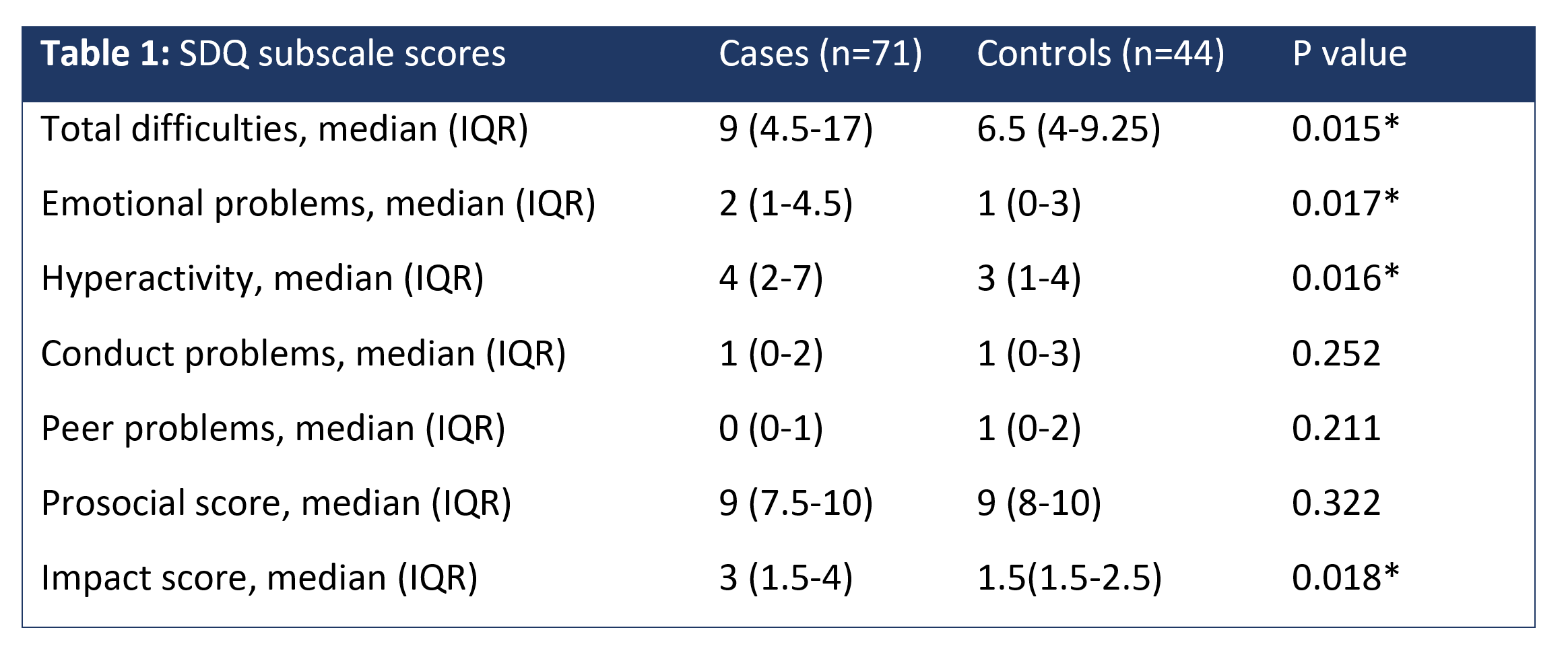Neonatal Follow-Up 3: Long-Term Outcomes in NICU Graduates
Session: Neonatal Follow-Up 3: Long-Term Outcomes in NICU Graduates
592 - Strengths, Difficulties and Educational Supports Amongst School-Aged Children following HIE in the Therapeutic Hypothermia Era
Monday, April 28, 2025
7:00am - 9:15am HST
Publication Number: 592.6889
Anne L. Murray, University College Cork, Cork, Cork, Ireland; Laura A. O'Sullivan, INFANT research centre, University College Cork, Cork, Cork, Ireland; Nora Skuridina, University College Cork, Cork, Cork, Ireland; Geraldine B. Boylan, University College Cork, Cork, Cork, Ireland; Eugene M. Dempsey, University College Cork, Cork, Cork, Ireland; Deirdre Murray, University College Cork, Cork, Cork, Ireland; Brian Walsh, Infant Centre, University College Cork, Cork, Cork, Ireland

Anne L. Murray, MB BCh BAO MRCPI MSc
Clinical Research Fellow
University College Cork
Cork, Cork, Ireland
Presenting Author(s)
Background: Therapeutic hypothermia (TH)is the standard neuroprotective intervention for neonatal hypoxic-ischaemic encephalopathy (HIE). Long-term follow up of infants in the TH era has shown variations in cognitive performance, need for school supports, and behavioural difficulties. There is a paucity of data on school-aged outcomes in children with mild HIE.
Objective: This study aimed to capture the range of behavioural and cognitive challenges in a large cohort of school aged children across all grades of HIE and compare these to peers.
Design/Methods: This data was collected as part of an ongoing prospective longitudinal study of school-aged outcomes after HIE. Families were contacted who had enrolled in previous studies at the INFANT Centre and Cork University Maternity Hospital (CUMH). Control participants were recruited via social media, if they did not need admission to the neonatal unit within 12 hours of birth and had no developmental diagnoses.
Parents/caregivers of enrolled participants filled in two questionnaires; the Strengths and Difficulties Questionnaire (SDQ), a brief behavioural questionnaire that has been previously validated, along with a sociodemographic questionnaire, which captured data on other diagnoses and potential school supports.
Results: 115 children have been enrolled in the study to date, 71 cases (34 mild, 31 moderate and 6 severe HIE) and 44 controls. The median age (IQR) was 8.41 (6.72-9.70) and 7.74 (6.25-8.66) years in case and control groups, respectively.
98% of cases attend mainstream school; of these, 36% require additional support in school, compared to 16% of controls (p=0.029, OR 3.03, 95%CI 1.12-9.22). The need for support did not differ between children who had mild HIE and those with either moderate (p=0.189) or severe HIE (p=0.341).
In the SDQ, children who had HIE at birth were more likely to have a higher total difficulties score (p=0.015), particularly in the areas of emotion and hyperactivity. They are also more likely to have issues with concentration, behaviour or social relationships that significantly impacted their family or school activities (p=0.018)(Fig1,Tab1). There was no difference in the total difficulties score between mild and either moderate (p=0.414) or severe HIE (p=0.569).
Conclusion(s): Most children are in mainstream school following HIE at birth, however these children more likely to need support in school than their peers. They are also more at risk of socioemotional issues which can have a significant impact on their home and school life. There is no difference in the need for school support or socioemotional difficulties across HIE grades.
Table 1: SDQ subscale scores

Figure 1: Summary of Significant Findings of SDQ
.png)

